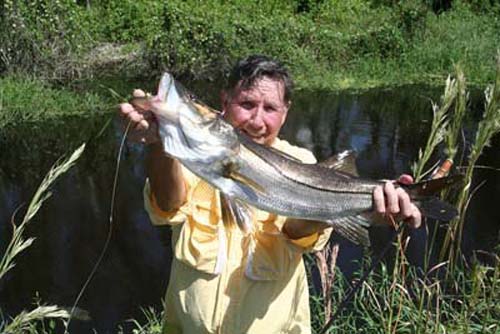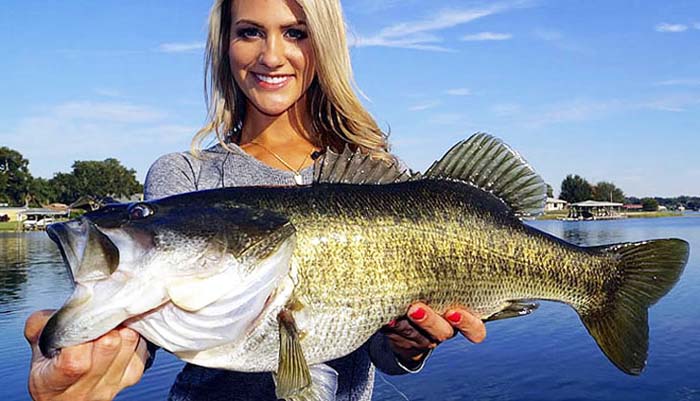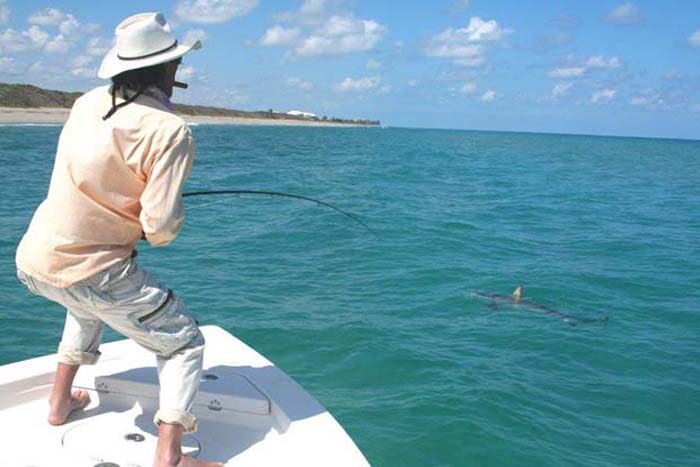
An underwater bonefish shot by Captain Brandon Cyr. Did you know bonefish kept out of the water for more than 15 seconds are six times more likely to die post-release? Image provided by Bonefish & Tarpon Trust.
“Please Release Me Let Me Go, You Don’t Need Me Anymore”
By Skip Clement
[dropcap]T[/dropcap]here are several lists of dos and don’ts compiled by organizations like the Bonefish & Tarpon Trust, Snook & Gamefish Foundation, states’ fisheries management commissions, federal fisheries management administrations, like NOAA, a bevy of sport fishing publications, several good online websites and some well-intentioned bloggers.
The best practice for releasing billfish and other offshore heavyweights are addressed by the International Game Fish Association (IGFA), The Billfish Foundation (TBF), In the Bite newsletter, and Marlin magazine.
Bad releases: Mistakes that end in post-release fish mortality skyrocket when these following unintended-to-do-harm practices are engaged in:

Although my hands were wet and the fish supported, I kept this snook out of the water too long, recalling having to revive it. It went on to live and love again. This photo appears in Steve Kantner’s newest book, Backcountry Flies.
1. Handling fish with dry hands or gloves removes protective slime. Slime is like our skin. Rupture it, and infection is possible. In the wild, there are no pharmacological remedies.
2. Extending the fight. Sometimes it’s unavoidable, and it happens while fishing for one species, like a bonefish in a mangrove setting and a 60-pound tarpon races from nowhere and grabs the fly. That 7-weight fly rod hasn’t the backbone to settle the fight in a few minutes – unless you’re a very skilled angler – like knowing to use the butt of the rod along with your legs. Not the tip-top of the rod.
More realistically, those that feel they’re manning-up when they fish for say a permit and purposely under-gun and use low-single digit pound-test tippets do create fish kill problems. That kind of intentional under-rigging necessitates wearing out the opponent. The release of a fish in this state invites predation or death by exhaustion. The percent of survivors stressed to death in that circumstance is very high.
3. Gripping and lifting a fish, like a largemouth bass by the lower lip without body support for a show and tell camera shot is not good. The chances of breaking or dislocating its much-needed jaw are possible. If you’ve tampered at all with jaw mechanics, it’s a done for fish.
4. Overstaying the fish out of water will lead to a bad outcome. Try to get your photo op with a well-supported fish and do so in seconds not minutes.
5. Dragging a steelhead or salmon out of a deep pool to the shallows to make a release will “always” end in a dead fish post-release. The fish, attempting to swim, repeatedly bangs its head on the rocks and does so much damage that it dies within an hour after release.

Brooke Thomas knows how to catch, hold, photo op, and release a largemouth bass. A Brooke Thomas photo.
Best Practices for Catch & Release, courtesy of Snook & Gamefish Foundation:
• Minimize handling, since this can remove protective slime from the fish. If you handle a fish, use clean, wet hands. Support the fish beneath the head and belly.
• Minimize exposure to air, maximum 15 seconds.
• Avoid using mechanical lip-gripping devices on active fish, since this can cause jaw injury.
• If getting a fish’s weight is a must, attach a cradle to the scale to support the fish’s weight.
• Keep fingers away from the gills; damaged gills make it harder for the fish to breathe.
About Hooks:
1. Use barbless hooks, since this reduces the amount of handling needed to remove the hook.
2. When fishing with bait, use circle hooks.
3. If the hook is in the throat, cut the line as close to the hook as possible – that causes less damage than removing a deeply-set hook; most fish can reject the hook or the hook dissolves over time.
4. Keep the fight short. Long fight times result in an exhausted fish, which is more vulnerable to predators. However, a fish reeled in too quickly may thrash about, increasing its chances of injury.
5. Use tackle that matches the fish and conditions. Try not to use a 3-weight to fight a coho salmon.

Andy Mill makes quick work of a slightly sub-100-pound spinner shark off the coast of Palm Beach, Florida. He uses the rod butt and his legs to shorten the fight. Steve Kantner photo.
Reviving and keeping in good shape
1. If a fish loses equilibrium (it rolls over or goes nose down on the bottom). You can retrieve and revive it by holding it and swimming it upright – you fought the fish too long.
2. When retrieving a fish, be sure that water passes over the gills from front to back.
3. Move the fish forward or hold it upright in the water allowing it to pump water through its gills.
4. High water temperatures will negatively impact endurance of a fish and post-release survival. For example, a bonefish survival after release in hot summer waters will cause death. In warmer water, reduce fight and handling time.






